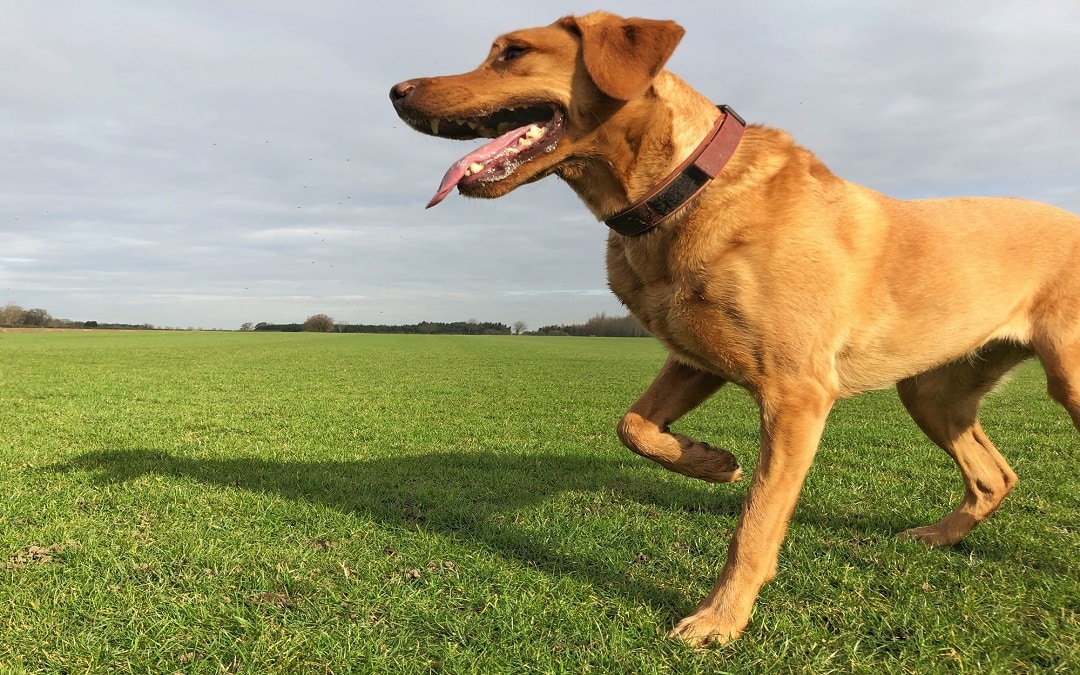Osteochondritis dissecans is when the cartilage separates from the end of the bone. Osteochondrosis refers to an abnormal development of the cartilage. It is this abnormal development that causes the OCD to occur. In dogs, it is most commonly seen in the shoulder joint, but can also occur in the elbow, hip, knee, or hock. This is a treatable condition, though the prognosis does vary depending on which joint is affected.
What is Osteochondritis Dissecans (OCD)?
In osteochondritis dissecans, the inflamed cartilage can become detached or tear, which causes pain for the dog and lameness. It occurs whilst dogs are growing, and will standardly show symptoms from between 4 and 9 months. It can occur in either one or two joints, and if present in both joints, the puppy may not present with classic lameness, but rather an abnormal gait.
Dog Breeds Prone to Osteochondritis Dissecans
Certain breeds are more prone to develop canine osteochondritis dissecans. Large breeds that grow quickly are more susceptible to this condition. Canines that are at risk from this are; Labrador Retrievers, Golden Retrievers, and Newfoundlands, as well as Bernese Mountain Dogs, Chow Chows, German Shepherds, Mastiffs, Old English Sheepdogs, Rottweilers, and Standard Poodles. If you have a dog that has been diagnosed with this condition, it is important not to breed from both the affected dog, and any siblings, parents, or previous offspring.
The condition is known to be passed on genetically, and responsible canine breeding can help to work towards reducing the prevalence of this condition. If you are buying a puppy, always ask about the health of the parents to reduce the risk of buying an unhealthy dog. Osteochondritis dissecans is more common in male dogs, though the reason for this is not known.
Causes
Genetics play a part in the cause of this condition, though other factors can also affect the likelihood of this condition developing. These can include; diet, either poor quality or a puppy being overfed; growth rate, where the growth of key bones is out of balance; trauma to the area, which can affect normal growth patterns; hormonal imbalance, which causes problems in growing puppies; and joint architecture, where the joint develops abnormally putting extra pressure on certain areas.
As a responsible canine lover, you can do your best to reduce the risk of your dog developing this condition, by following a healthy diet and exercise routine and sourcing your puppy from a reputable breeder.
Signs and Symptoms
The classic presentation of osteochondritis dissecans is lameness, which is often worse after exercise or prolonged rest. If the OCD is present in both limbs, then dogs won’t necessarily present as lame, but rather with an altered gait.
Other signs will include reluctance to exercise, pain on manipulation of the joint, or behavioural changes that could demonstrate pain. You will recognise if your canine friend seems unhappy, and often this can mean that he is in pain. It is always best to seek advice if you are unsure about the health of your puppy.
Diagnosis
An initial examination will be carried out by the vet, examining and manipulating the joint. Often the puppy will show signs of distress when the joint is examined. Your description of behaviour and lameness is also very important to help the vet make a preliminary diagnosis.
If he suspects that there is an issue in the joint, he will carry out imaging, such as an X-ray of your puppy. If an X-ray is insufficient to confirm the suspected diagnosis, then an ultrasound can be performed, or occasionally an arthroscopy will be carried out. An arthroscopy is where a small camera is inserted into the joint so that the vet can see the joint in great detail.
Treatment
The treatment plan will depend on the severity of the presenting affected joint. If there is minimal damage and the puppy is still relatively young, treatment may be non-surgical. With extremely restricted exercise, for a period of a few weeks, followed by ongoing rehabilitation, the cartilage defect may be able to be repaired. If the damage to the affected joint is more severe, orthopaedic surgery will be required to repair the cartilage.
Arthroscopy is the gold standard for surgery, as it is less invasive than open joint surgery. A small camera and specially designed instruments are inserted into the joint and the damaged cartilage can be removed, repaired, or occasionally a full cartilage replacement can be performed. Your vet will explain clearly what the surgery aims to achieve so that you are kept fully informed throughout the process.
Post-Treatment Care and Rehabilitation
Post-treatment care is incredibly important. Your puppy will need to be kept on very restricted exercise for the first few weeks, to enable optimal healing. When exercise is introduced, it will need to be built up gradually and consistently to strengthen the joint and ensure the best outcome.
You will have a detailed rehabilitation plan from your vet, which you must follow. Your vet will give you exercises to do with your puppy during the rehabilitation process to help keep the joint flexible and mobile during the healing process. Canine hydrotherapy or canine physiotherapy can also assist with healing, though always consult your vet before carrying out any other therapy or treatment.
How to Prevent Osteochondrosis?
Even if you do everything correctly, OCD can sadly still occur. However, good puppy management will help to reduce the risk. Make sure your puppy is fed a good quality diet, to ensure good bone development. Do not over-exercise your puppy, as their growing bones are very susceptible to strain.
What Age Do Dogs Get OCD?
Osteochondritis dissecans can start to show in puppies from as young as 4 months of age. Commonly, it presents between 4 and 9 months of age. In very mild cases, the symptoms may not present till your puppy is older. The quicker you seek veterinary advice, the better the outcome of the treatment.
Does OCD Painful?
Osteochondritis dissecans is a painful condition for dogs. The earlier treatment is carried out, the better the prognosis. Shoulder osteochondritis responds well to surgery and has a good success rate. Orthopaedic treatment will aim to reduce pain and restore mobility to your canine friend, giving them a happy and healthy life.
Elbow osteochondritis or OCD in other joints have a more guarded prognosis, but surgery will still give dogs the best chance of a good life. Where your dog is still in pain, a pain management plan will be implemented to reduce their pain. This may include reduced exercise and ongoing treatment, but we will always work with you to give your dog the best possible outcome.
Get Your Dog Treated for OCD
The earlier your puppy get treated for shoulder OCD, elbow OCD, or OCD in other joints, the better the success rate. Here at Anrich Vets, we put your pet at the heart of all that we do. Our aim is always to treat your pet to optimise their chance of a long and happy life.
Our experienced surgical and nursing team will be on hand throughout your dog’s treatment and rehabilitation to provide support and advice. If you are worried about your puppy and suspect that he may be lame or in pain, it is always best to come and see us. To book your appointment today, simply call our helpful and professional team on 01942 242001.

